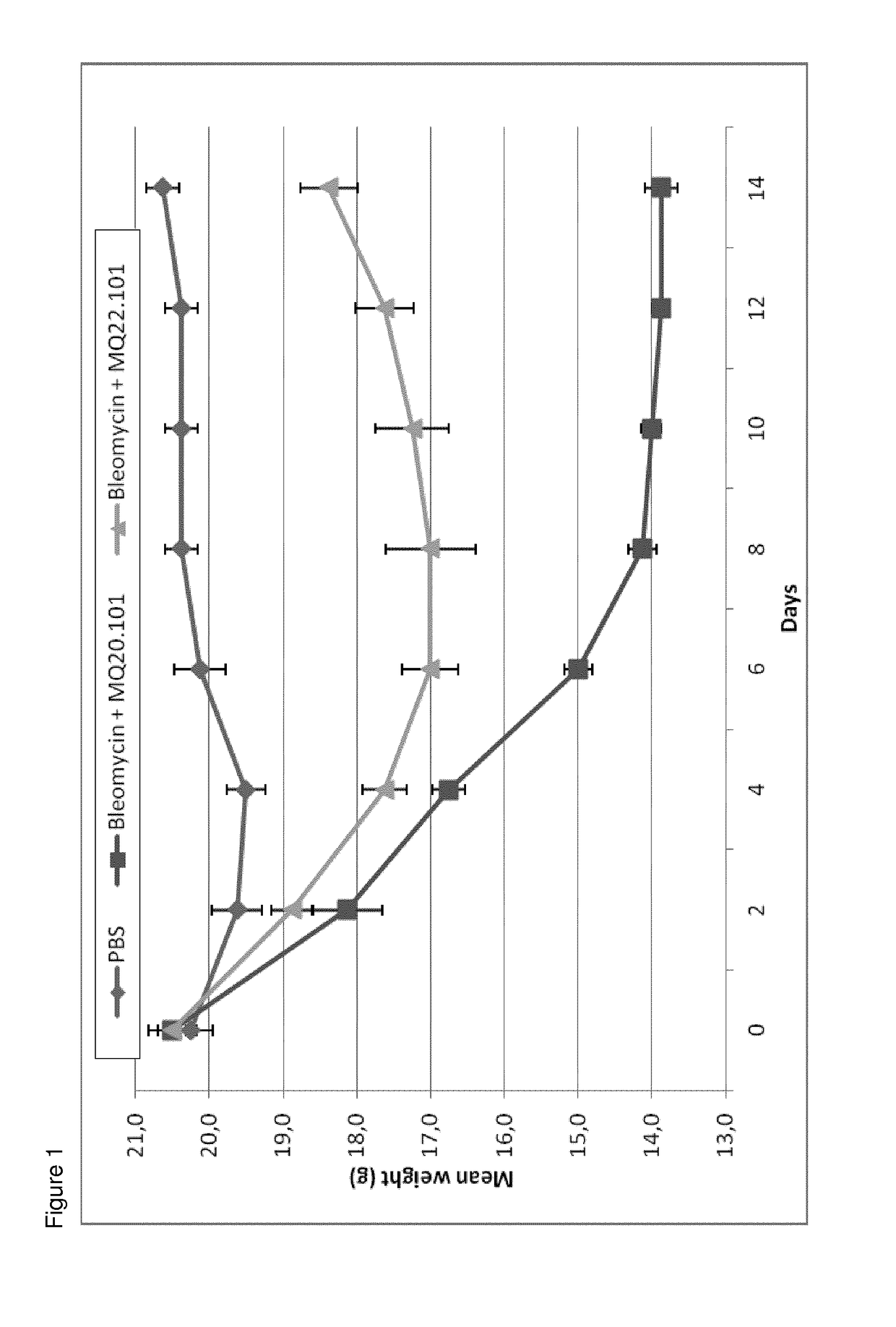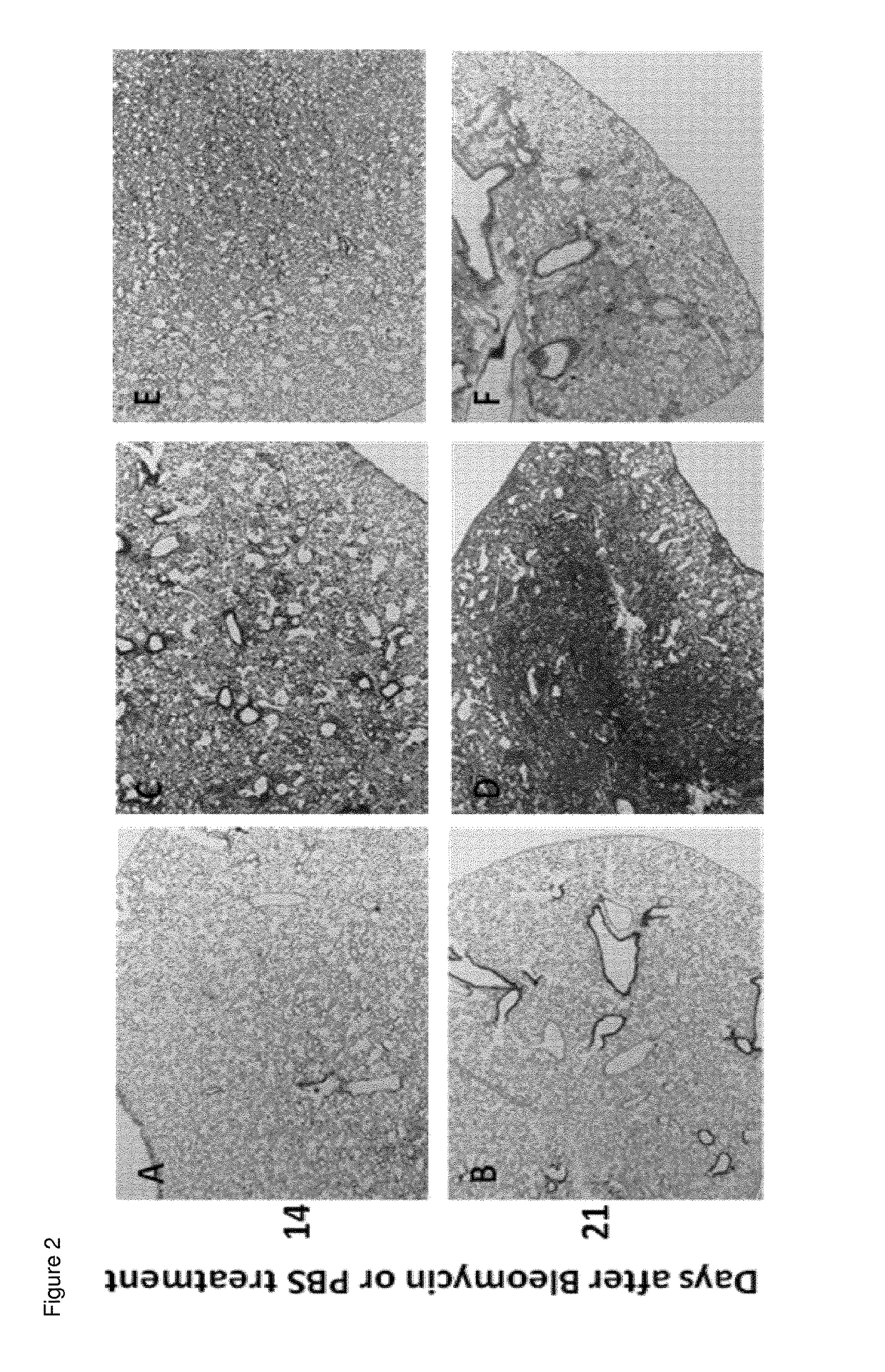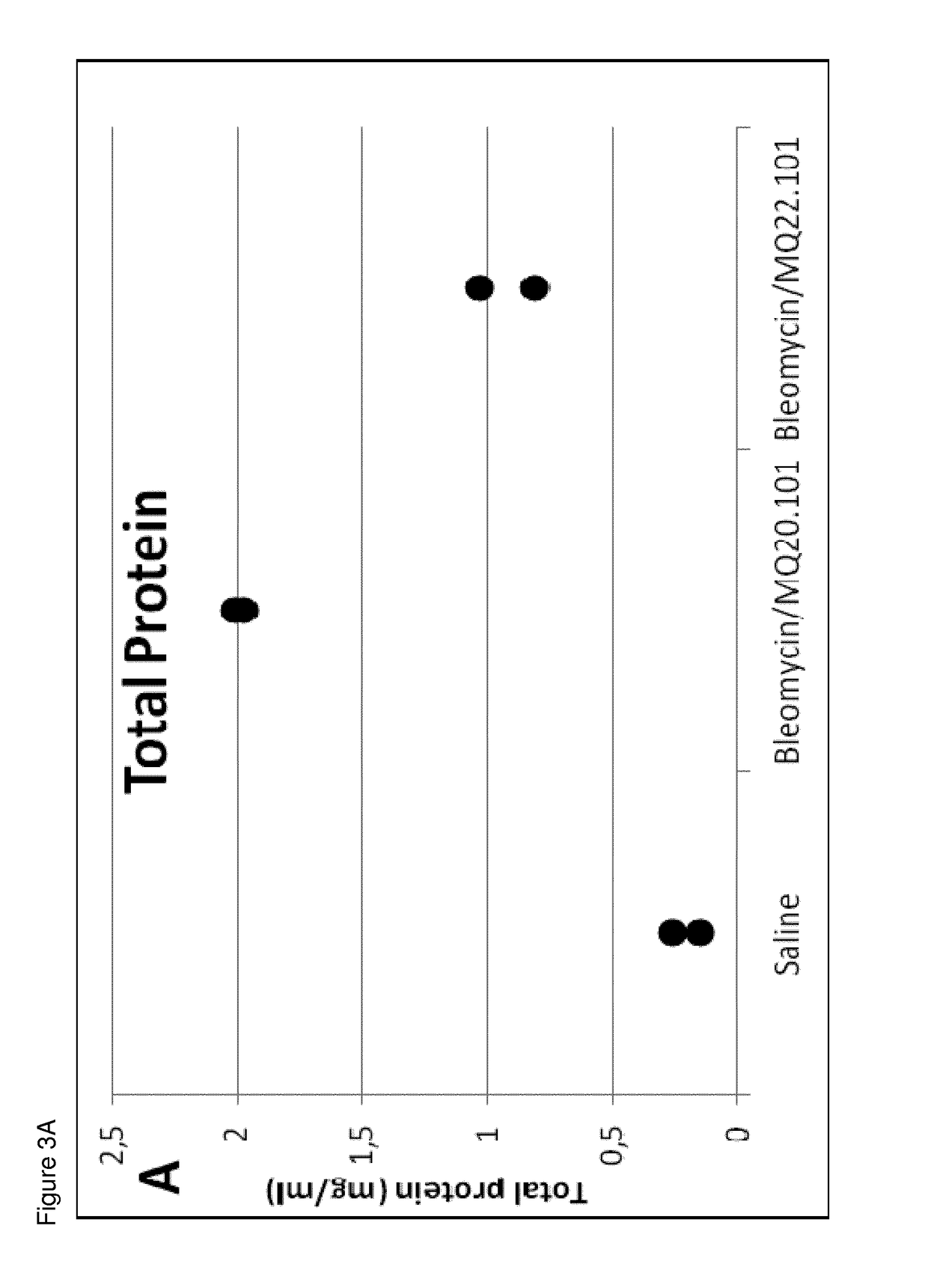Method for the treatment of idiopathic pulmonary fibrosis
a technology for pulmonary fibrosis and idiopathic pulmonary fibrosis, which is applied in the field of medical treatment methods and preparations, can solve the problems of lack of scientific evidence to suggest the effectiveness of current therapeutic strategies, and achieve the effect of preventing, ameliorating or abolishing the symptoms of ip
- Summary
- Abstract
- Description
- Claims
- Application Information
AI Technical Summary
Benefits of technology
Problems solved by technology
Method used
Image
Examples
example 1
Experimental Animal Model for Fibrosis
[0045]Female C57BL / 6 mice (6-8 weeks old) were purchased from The Jackson Laboratory. All mice were maintained under pathogen-free conditions and were provided food and water ad libitum. Lung injury was induced on day 0 when the mice were 8-10 weeks old (weighing 19-21 g), by oropharyngeal instillation of bleomycin (0.045 units / mouse). Control animals received an intratracheal instillation of PBS. On days 0, 2 and 5, bleomycin treated groups received an intraperitoneal injection containing 1 mg MQ22.101 or 1 mg of control antibody MQ20.101 (irrelevant isotype matched control antibody). Weight of all animals has been assessed each other day starting from day 0 until day 14 (FIG. 1).
[0046]Two and 3 weeks after bleomycin or PBS instillation, mice were killed by cervical dislocation under isoflurane anesthesia, and lungs and bronchoalveolar lavage (BAL) fluids were collected. Lungs were fixed, paraffin embedded, and sections Masson stained in order ...
example 2
Confirmation Experiments
[0047]The results obtained in example 1 were confirmed in a separate and independent experiment with a slightly altered experimental set-up.
[0048]Male C57BL / 6N mice (19-21 grams at arrival) were purchased from Charles River. All mice were maintained under pathogen-free conditions and were provided food and water ad libitum. Lung injury was induced on day 0 when the mice were 8-10 weeks old (weighing 19-21 g), by intranasal challenge of bleomycin. Bleomycin sulphate has been dissolved in 0.9% solution of NaCl (10 mg / 25 ml) in order to reach concentration of 0.4 mg / mL of bleomycin, and then divided into aliquots of 1 ml, stored at −20° C. The dose of bleomycin solution for challenge is 50 μl / mouse. Control animals received an intranasal challenge of PBS. Pirfenidone has been used as established treatment for pulmonary fibrosis in the bleomycin induced pulmonary fibrosis animal model. Every morning, pirfenidone for daily dosing has been prepared by solving the p...
example 3
Generation of ACPAs
[0051]Antibodies against a peptide comprising a citrullinated epitope on the N-terminus of deiminated histone H2A or H4 were raised by immunizing mice with a peptide according to SEQ ID NO: 1 and SEQ ID NO 2 in DBA / J1 mice as previously described in WO 2011 / 070172.
[0052]In brief: at day 125 after start of the immunization process serum samples were taken and analyzed for a citrullin specific antigen response. This was done by comparing the signals obtained in an ELISA with a peptide according to SEQ ID NO:1 as antigen in comparison with an ELISA with a peptide according to SEQ ID NO:3 as antigen. All mice showed a specific antigen specific serum titer at the time points tested.
[0053]In order to produce hybridoma cell-lines, spleens were dissected after the last boost, splenocytes were harvested from the spleen and fused with a mouse myeloma cell-line (NS-1) according to standard procedures. Antibody specificity in hybridoma supernatants were screened on citrulline...
PUM
 Login to View More
Login to View More Abstract
Description
Claims
Application Information
 Login to View More
Login to View More - R&D
- Intellectual Property
- Life Sciences
- Materials
- Tech Scout
- Unparalleled Data Quality
- Higher Quality Content
- 60% Fewer Hallucinations
Browse by: Latest US Patents, China's latest patents, Technical Efficacy Thesaurus, Application Domain, Technology Topic, Popular Technical Reports.
© 2025 PatSnap. All rights reserved.Legal|Privacy policy|Modern Slavery Act Transparency Statement|Sitemap|About US| Contact US: help@patsnap.com



